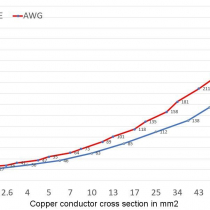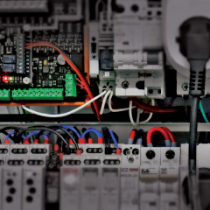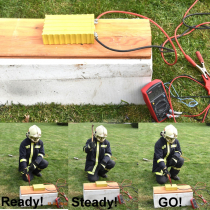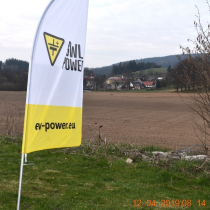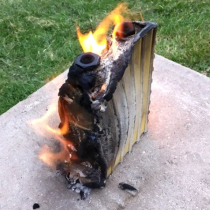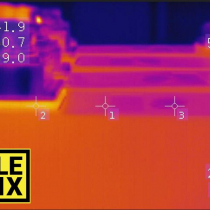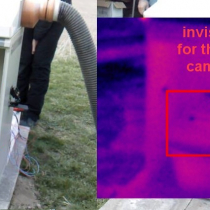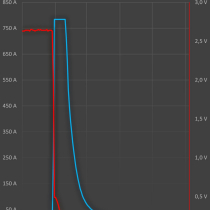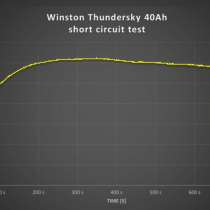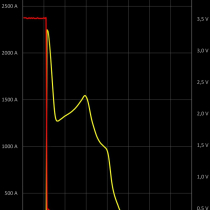Blog - Tests and diagnosis
More current in wires permitted in US than in Europe
Comparingthe permissible current rating for copper wires, it is evident that the US standard – known as the AWG - American Wire Gauge (or Sizes) – allows for higher currents than the European standards, expressed by the German VDA norm.
For example, a50 mm2 cablecan carry some
What is GWL team doing? Working and designing!
The GWL Team is able to make a solution for any type of energy storage. The copy of the drawing shows details of a project processed by GWL. Large energy storage cabinets with up to130 kWh battery packs and 50 kW – 400V 3 Phase input/output.
The DC/AC part is based on theVictron
The LFP 40AH cell hammered to death
The photos are showing the read-to-go steps ofthe abuse by the axe-hammer in the hands of the fire-fighter.
The cell had to be hit several times to produce any significant effect. As seen from the reading of the IR camera, the temperature ofthe hot area has reached some 108°C.&
The field test demonstration of lithium cell abuse
In the spring of 2019, the GWL/Team has organizedthe lithium cells abuse demonstrationto verify the performance in real conditions. There were following goals of these tests:
- Make the real field test demonstrations of the over-charge, short-circuit and fire abuse of the various cells: li-
Can a lithium iron phosphate (LFP) battery burn?
The answer is simple: yes, but it is not easy.The LFP lithium battery is made of materials that are flammable and it will burn, if overheated.
The photos showthe process of fire on a prismatic lithium battery. The battery was fully charged and then set to fire by a flame-thrower. As you can
New Elerix products - Heady duty testing
GWL has been working on the introduction of the new range of the high power LFP cells under the ELERIX brand. Part of the testing isthe verification of the thermal performance for the cells.
This photo set shows the results of the high current over charge testing.The cells is discharged with 210Amp cu
The progress of the shirt circuit test (LTO-40AH)
The series of photos shows the progress of the short circuit test for the LTO-40Ah cell. At the beginning of the test, the temperature of the cells is same as the temperature of the surrounding, so that the cell is not visible at the IR photo.
Starting the tests, the temperature begins increasin
The safe battery technology LTO - - - - only 95°C during...
The data recorded at the short circuit test show that the maximal temperature of the Lithium Titanium Oxide - LTO-40AH - cell reached to some 94°C.
This tests proves that the lithium titanite(LTO) batteries are very safe and even during a massive short circuit,the temperature stays within the
The safe battery technology LFP - - - - only 85°C during...
The data recorded at the short circuit test show that the maximal temperature of the Lithium Iron Phosphate- TSWB 40AH - cell reached to some 85°C.
The outer temperature of the case measured by a temperature sensor was above 60°C, the more detailed measurement by the IR camera reached 8
The short circuit of 40AH cells - 2200 Amp reached!
The diagram on the left shows the data from a direct short circuit of the TSWB Winston 40AH cell. The cell was fully charged (even a little bit overcharged) to 3.4V volts of open voltage at the very beginning.
Right at the start, the current reachedthe peak above 2200 Amps. As the voltage of the cell

 English
English Česká republika
Česká republika Germany
Germany France
France España
España Italia
Italia Sverige
Sverige Polski
Polski Nederland
Nederland